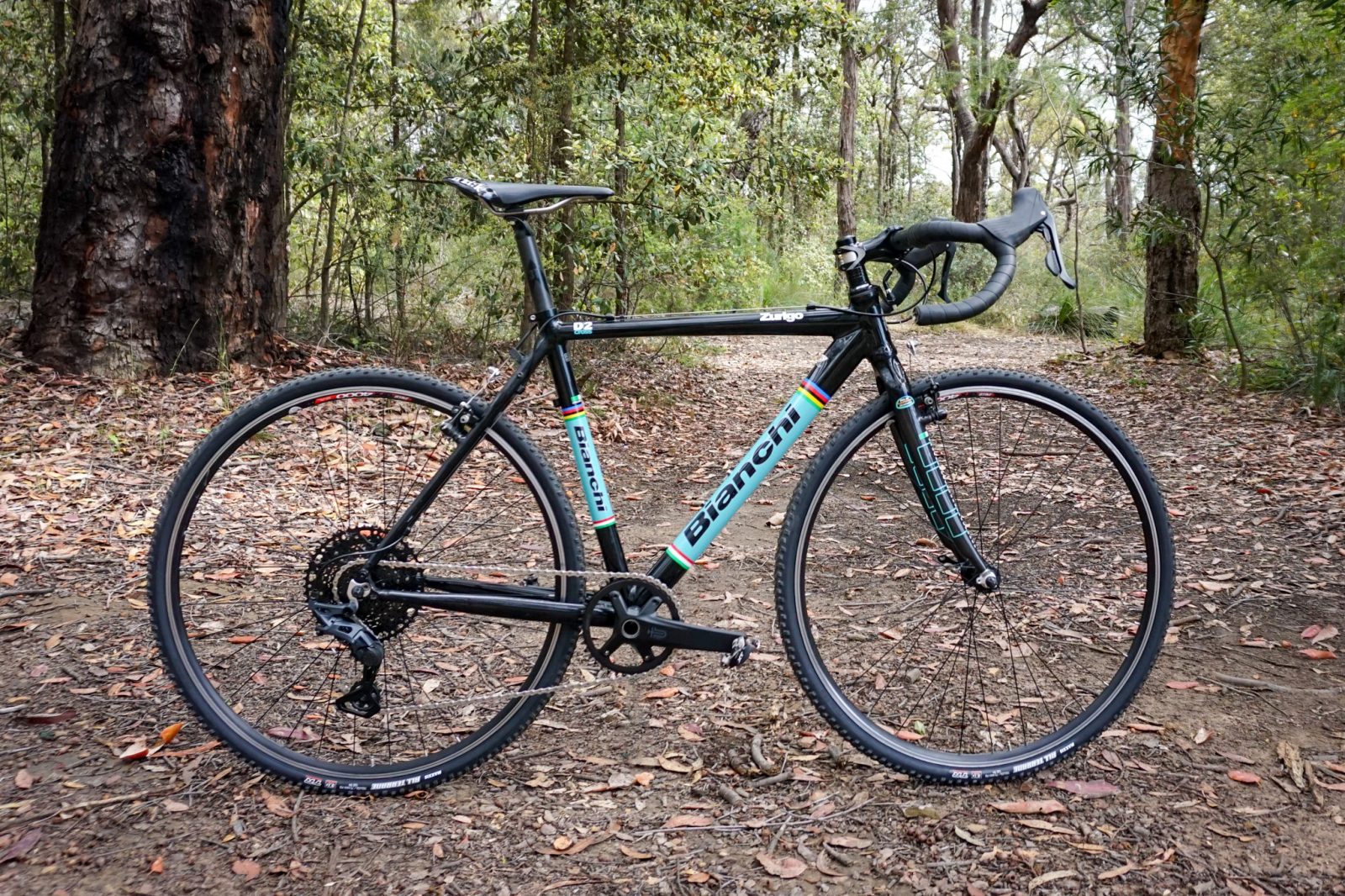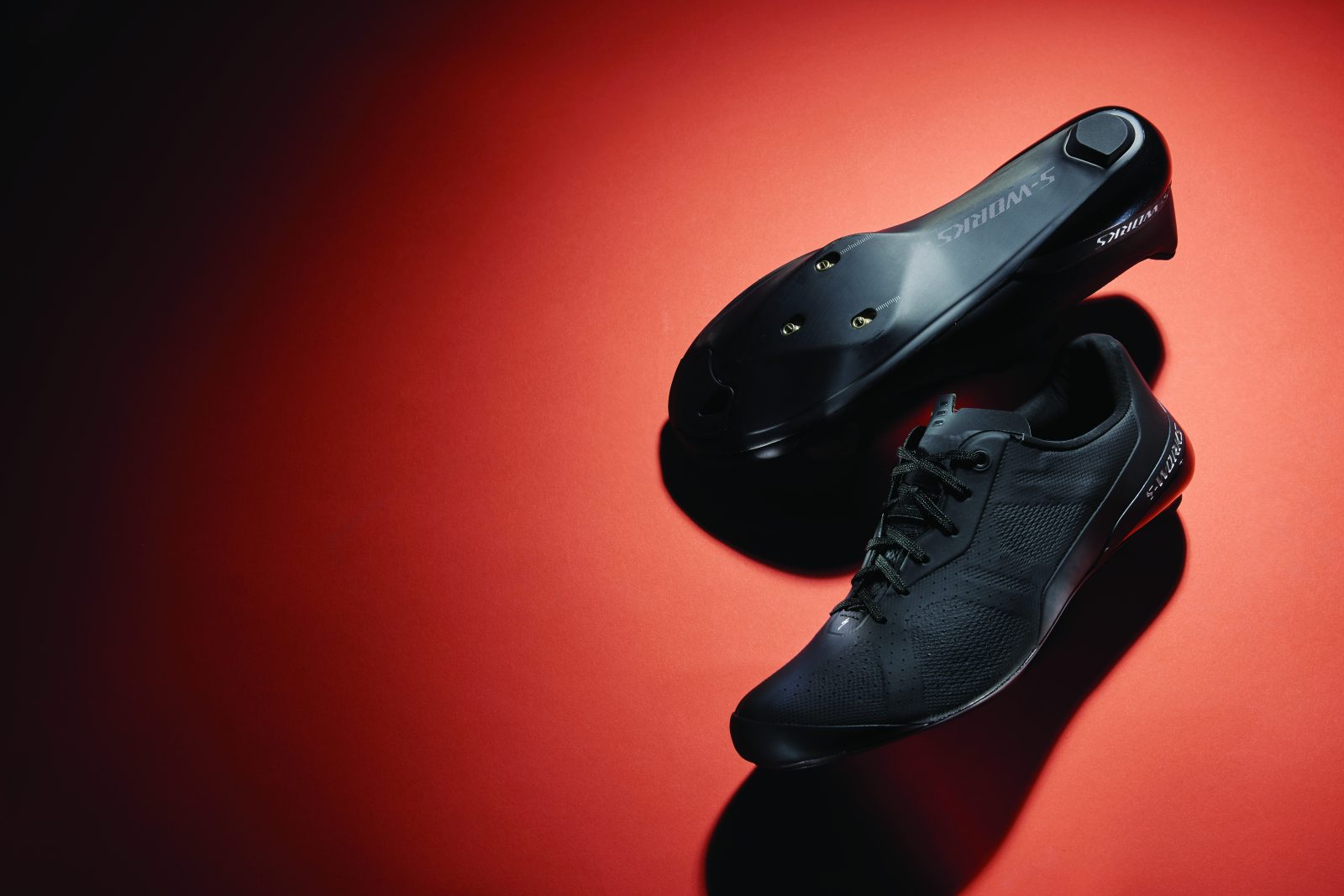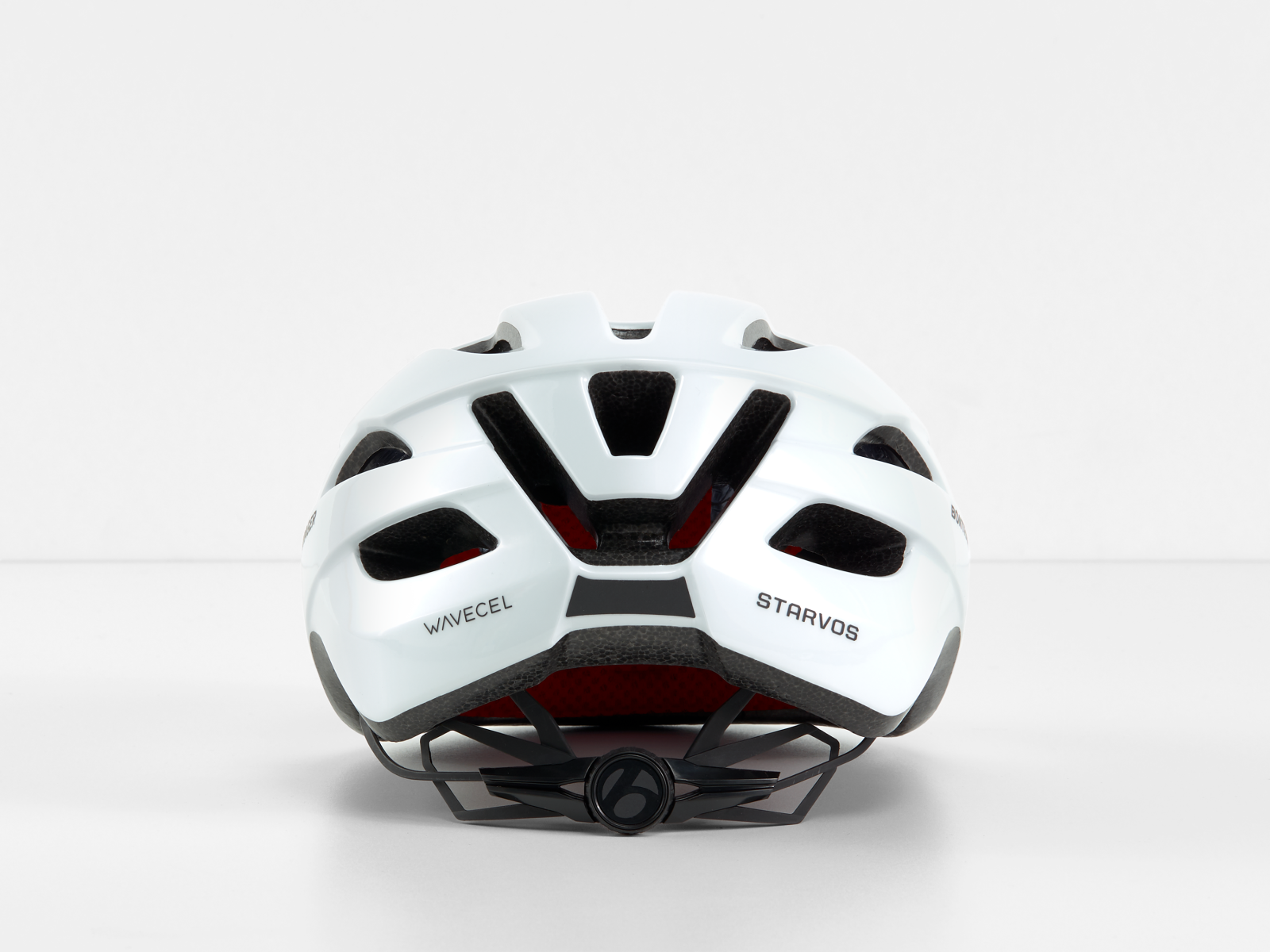Trek’s Madone Gen 8 has slimmed down its aero tubing and reduced hundreds of grams from the frameset, claiming it has done so without compromising ride quality or aero properties – and has killed off the Émonda in the process
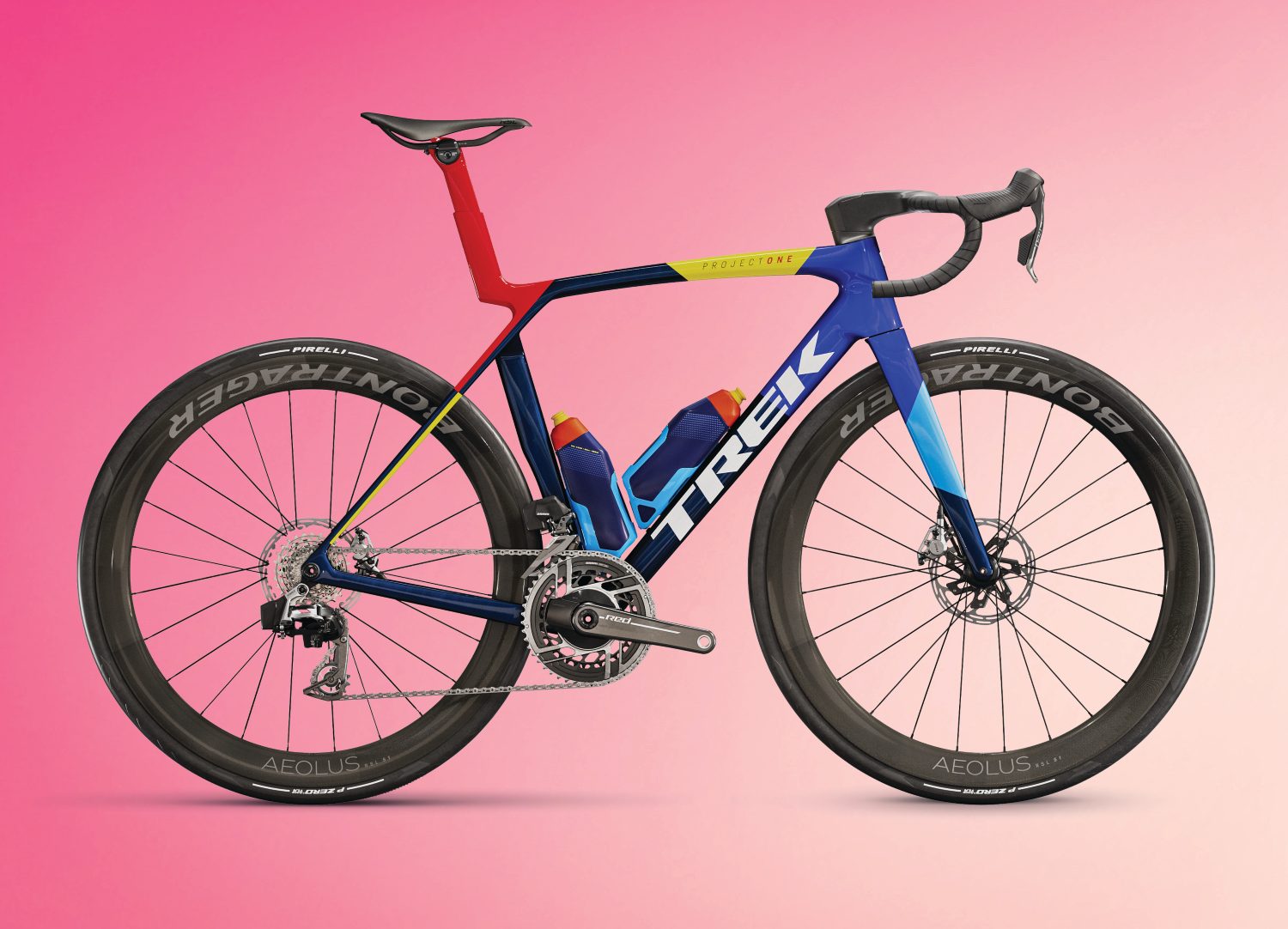
Words Jack Lynch
Trek has unveiled its newest road racing machine, an eighth-generation Madone that is lighter and more aero than any previous version across the iconic model’s 20-plus-year history.
Unsurprisingly, Trek says it’s the best road bike the US company has ever made: lighter than the Émonda and as aero as the previous Madone.
It’s lusted over by the pros, Trek continues, and in its first race – almost a month out from the official release – Mads Pedersen won a sprint stage on it at the Critérium du Dauphiné.
The new Madone has all but killed the comparatively young Émonda, first released in 2014.
It wasn’t Trek’s intention, though, as this new bike started as an Émonda update.
Somewhere along the line, the engineering and marketing boffins at Trek realised they had the tech (and the lingo) capable enough to render it surplus to requirement.

Riders want it all and bike companies are looking to reduce consumer confusion, so a bike that has one purpose (in the Émonda’s case, it was going uphill) is not something Trek could justify keeping.
Now the Trek retailer can say if you want a race bike that is light and aero, buy a Madone, or if you want a more comfortable road bike, the Domane is for you.
This also helps Trek’s bottom line. Fewer models means reduced production, handling, shipping and stock cost across the board, and it’s smart business to promise one bike that does aero better than the previous aero bike, and light better than the previous climbing bike.
But is it really possible to have one bike that is light and aero? Trek’s biggest competitor, Specialized, thinks so, but other global powerhouses such as Giant, Canyon and Cannondale all take a horses-for-courses approach.
Cyclist will review the Madone in-depth in our next issue, but for now, let’s look at what Trek has done to its new Madone and how it has improved the previous edition.
Achieving weightlessness
Generation eight of the Madone comes with an incredible 320g weight reduction on the previous edition.
Trek quotes an M/L size Madone SLR as a 796g frame, 350g fork.
Trek has achieved its weight loss by developing a new OCLV (Optimum Compaction Low Void) carbon, the 900 series.
It allows a more efficient moulding process, and is 20% stronger than the previous 800 OCLV flagship.
This means it requires less material to make a frame, and therefore less weight.
The fork is now moulded as a single piece, rather than bonding the carbon steerer onto the legs to reduce weight and improve stiffness and longevity.
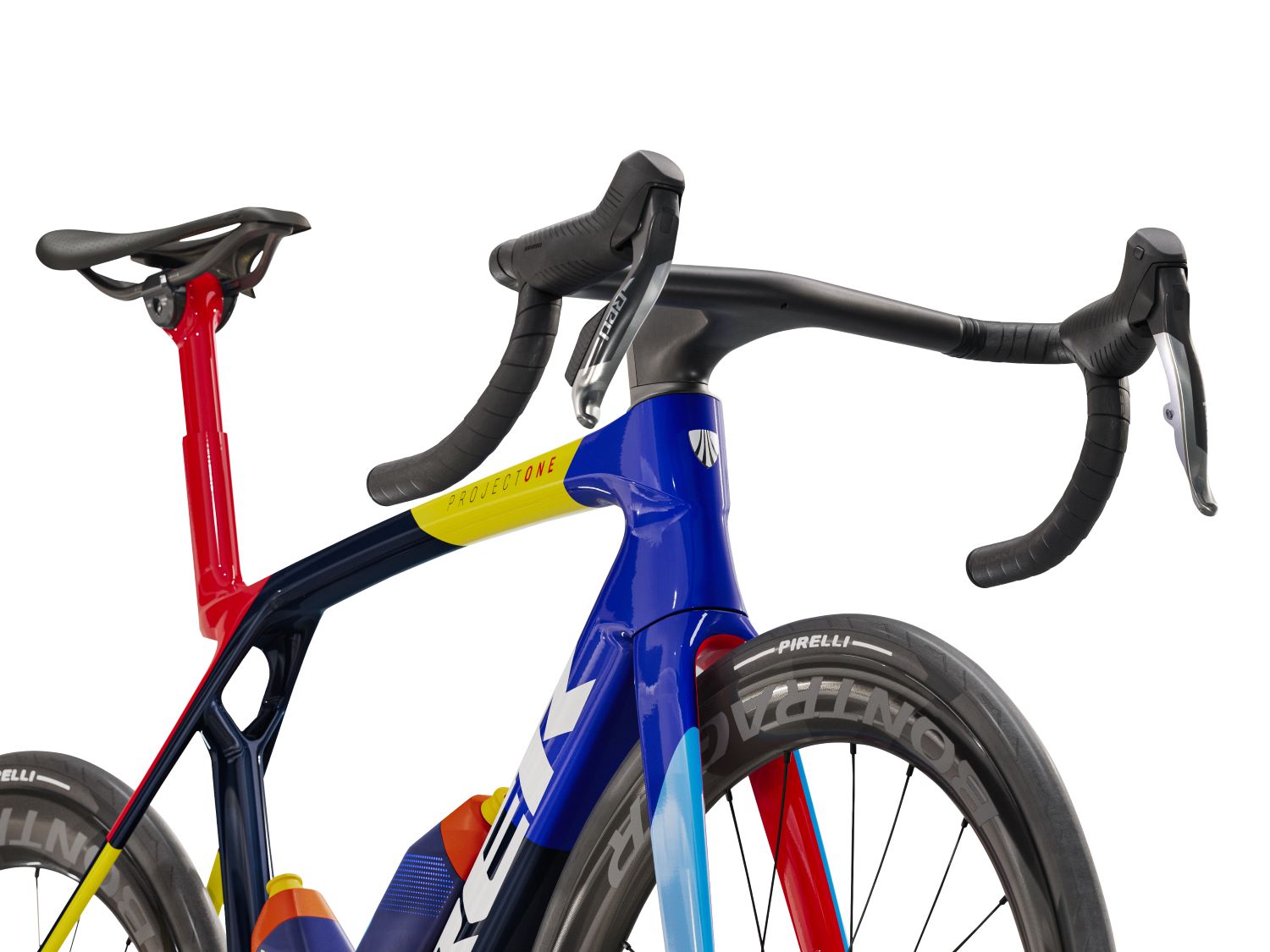
Getting aero
Most new race bikes are defined by how aero they are and how many seconds they saved on the previous model.
What makes this bike interesting is how Trek is celebrating parity.
The noticeably slimmer frame shapes are much more elegant than previous and are just as fast in the wind tunnel.
These Full System Foil shapes are 77 seconds per hour faster than the Émonda at 200 watts and break even with the significantly heavier Madone Gen 7.
The aero claims are made incorporating Trek’s new bottles and cages, which were specifically designed for this Madone.
This means if you want the bike to be as aero as possible, you need to use these bottles.
The good news is the RSL Aero Water Bottles and Cages come with all SLR models, but the rider will need to buy two to maximise aero gains if they buy a Madone SL.
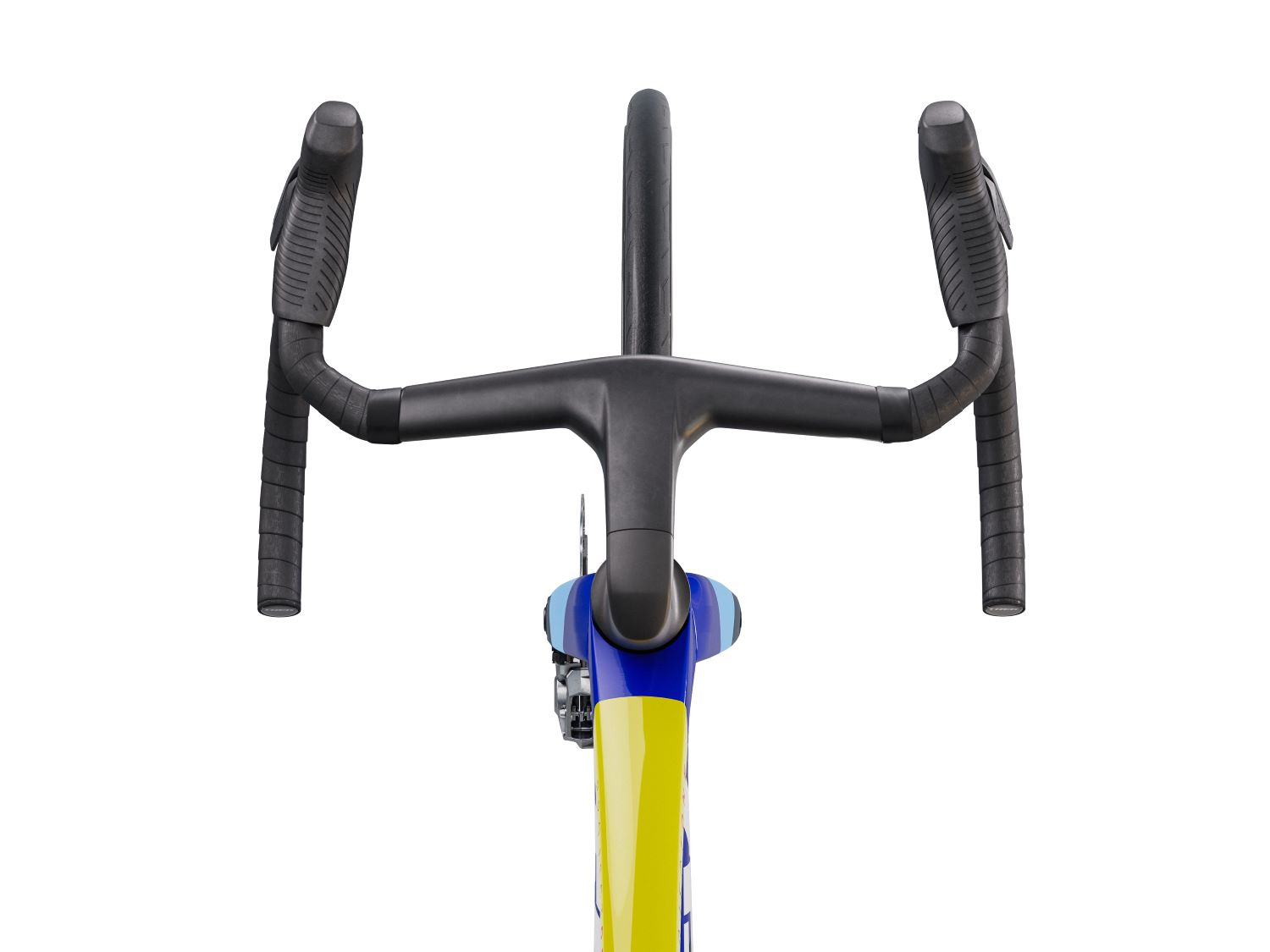
Going with the flow
Keen eyes will notice that the famous IsoFlow cutout under the seatpost has returned to the Madone but is smaller than what we’ve seen previously.
IsoFlow is said to improve aerodynamics and comfort – a rare feat in bikes – and in a world of homogenous road machines, it brings an aesthetic point of difference to Trek’s race bike.
The IsoFlow’s slimmer profile, coupled with OCLV 900 carbon has given it 80% more vertical compliance than Madone Gen 7 and 24% more than the Émonda.
Everyone can appreciate more compliance, particularly those spending long hours on the bike.
Resized
A big change to the Madone that you won’t see on any posters is a revamped sizing system.
Gone are the 50, 52, 54, 56cm (and so on) options, and in come T-shirt sizings of XS to XL (with an M/L thrown in).
rek has changed the Madone’s fi t from eight sizes to six, but guarantees the same range for all riders – the XS is smaller than the previous smallest 47cm frame, and the XL is just a shade smaller than the old 62cm.
We suspect this means Trek dealers will be supplied with a raft of different handlebars and stems to ensure buyers get their perfect fit – or at least the one they’re comfortable with.
Another change is a blessing for smaller riders.
Trek has slightly altered the tube shapes of the S and XS models to ensure these frames ride the same as the larger ones.
By narrowing the tubes, smaller riders will feel the same compliance as those on bigger bikes and shave a few grams off the overall package.
It’s a neat addition to the bike, which has considered people riding smaller frames.
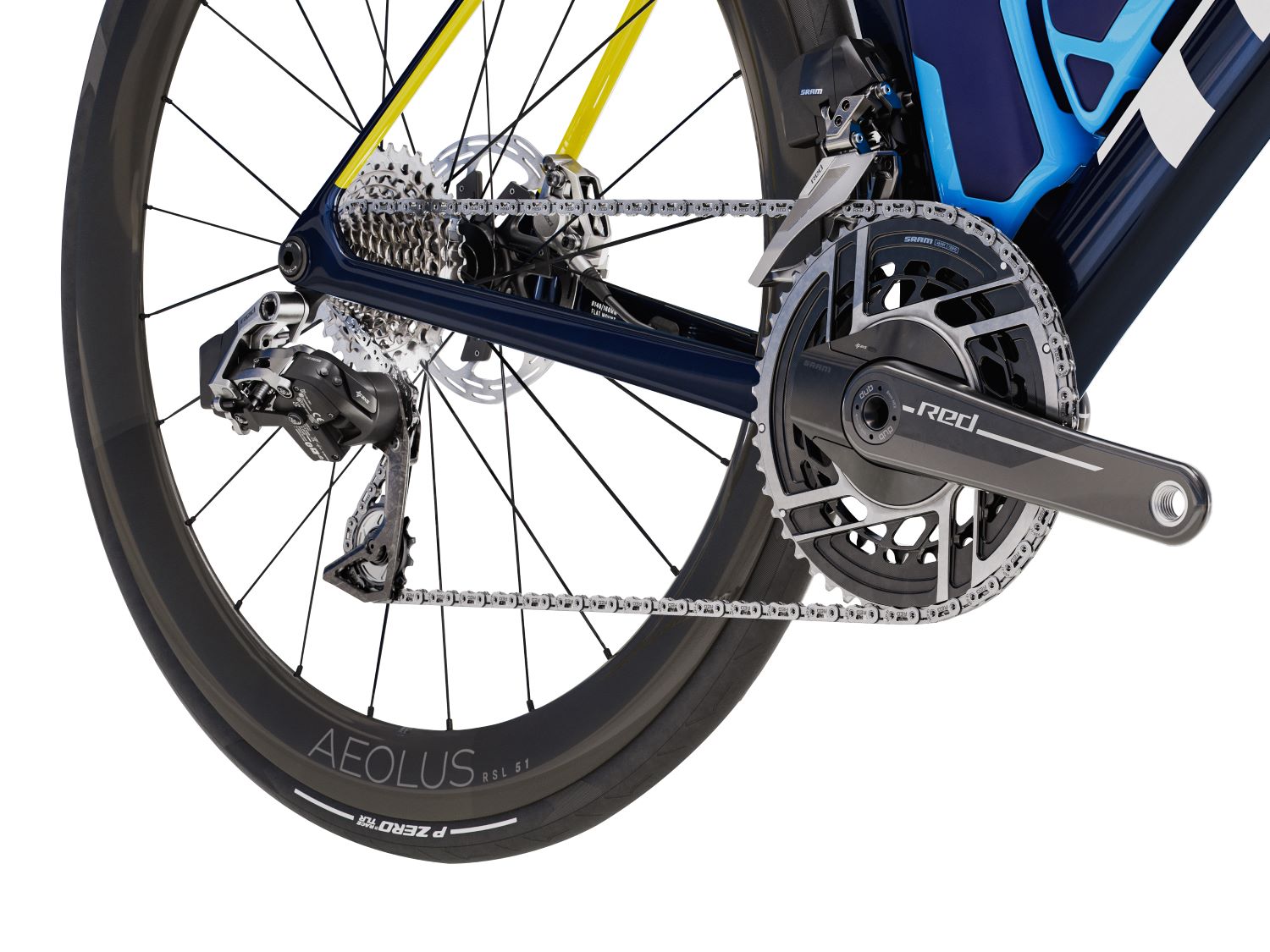
SLR vs SL
Trek’s naming convention for the Madone Gen 8 follows a familiar pattern: the flagship model, called the SLR, uses the premium 900 series OCLV carbon.
Meanwhile, the more affordable SL version employs the less expensive 500 series OCLV carbon.
Practically, it means a 250g bump on the SL frame, weighing in at 1,054g.
Everything else about the frame is identical.
As for cost, in Australia, the cheapest Madone SLR – the SLR 7 with Ultegra – is $12,999.
The most expensive Madone SL, the SL 7, is $8,499 with Ultegra.
It’s a bit of a game of spot the difference between these two models with groupset and wheels the same.
The main thing is that the SL models do not come with the integrated bar/stem handlebars of the SLR model.
Keep an eye out for a full review of the Trek Madone Gen 8 in issue 71 of Cyclist.
Trek’s Madone Gen 8 combines the lightweight properties of the Émonda with the aerodynamics of its predecessor, aiming to offer a versatile high performance race bike
Trek Madone SLR 9 AXS Gen 8, $19,999, trekbikes.com/au
